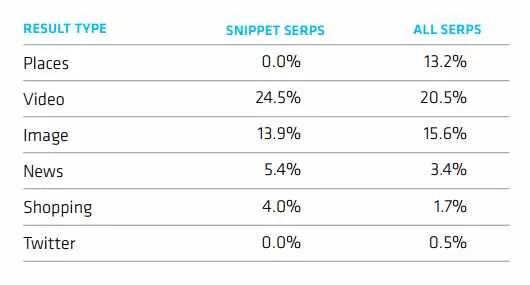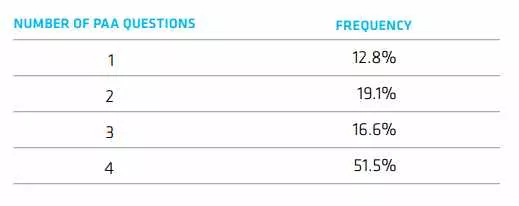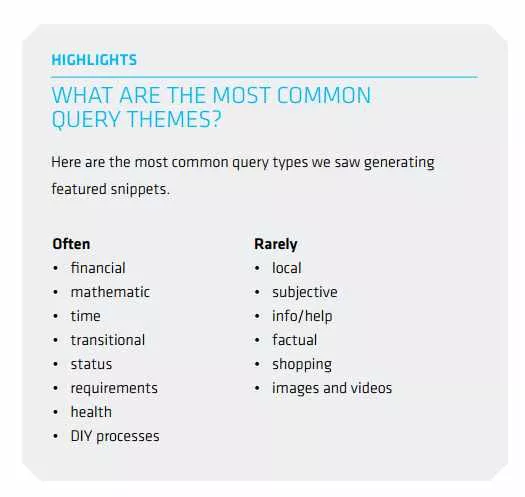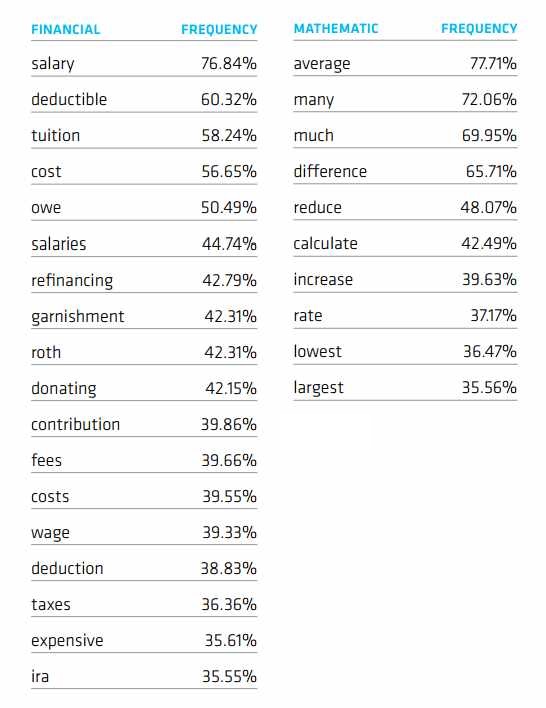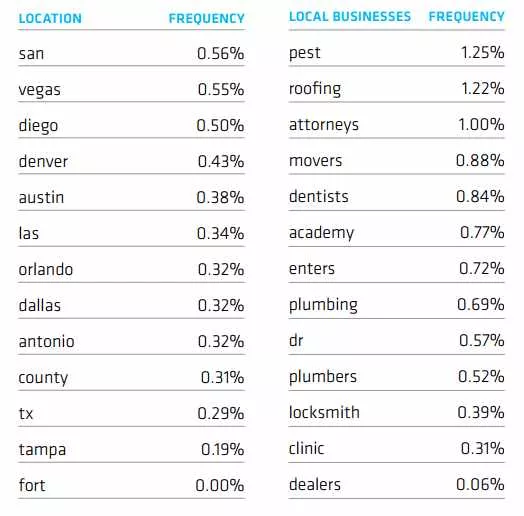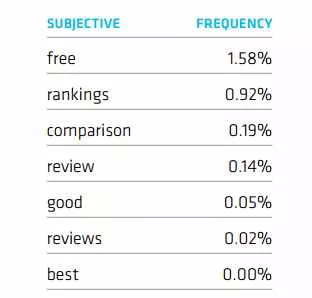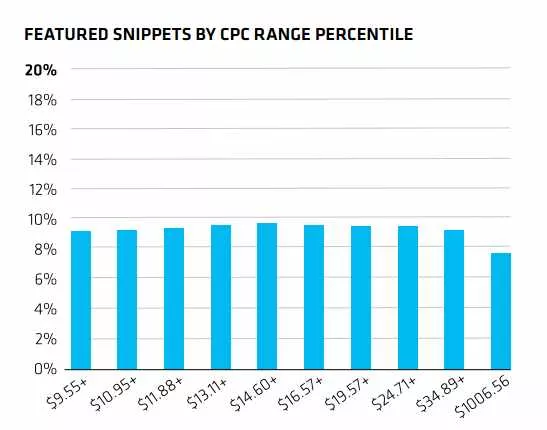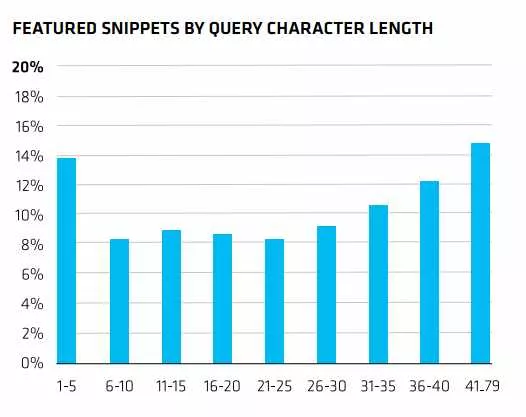For sure, the key factor of website search promotion is quality of its optimization for search engines algorithms. However, it is important for webmasters to not forget about additional tools of search engines users attraction. Why? Because taking the site to the top ten search results is the basic, yet not the only one task of project manager because he also has to attract search engines’ attention to the preview of web-documents of the resource.
The preview of every web page in SERP consists оf three parts: the headline of web document, its address in the world wide web and also a brief description. This description of a website page is what we call a snippet.
Snippet—a block with brief information about the website displayed in SERP.
Featured snippet—a summarized search result displayed in a special featured block at the top of search results page. The featured snippet is programmatically selected by search engine as the most suitable answer to the user’s query. It includes page title, URL and link to the website.
The hidden character of featured snippets selection make them both one of the most complicated and exciting element of SERP to work with. To properly evaluate the real meaning of featured snippets, we will go through cracking its code and defining how they impact the most competitive search result pages.
In the current post, we decided to reveal all hidden sides of featured snippets, taking the best of recent researches within the sphere and giving you the main points and the most useful tips. A thorough research of featured snippets set by STAT Team shared the most precise data based on top 100 ranking URLs for one million high-CPC keywords.
Why is this research so important? Because its impressive outcomes will give you the ability to look at the overall process of displaying results in a different way and strengthen your website with the best words and themes.
The research covered 9.28% snippets of analyzed queries, and it showed that 70% of those snippets were directing to the URLs that ranked lower than the first result on the page. The estimated traffic value was calculated using the current formula:
It helped to identify 1,569 snippet queries that had an annual traffic of more than USD 1 000 000.
The main idea here is the ability of creating a content specifically designed to be selected as a featured snippet that will give your site a serious amount of valuable traffic even if your site is not highly ranked.
Methodology
The research was based on top 1, 000, 000 CPC keywords in the Grep Databased presented by Russ Jones from Moz. These keywords were led into STAT to gather the US desktop results during a two-days period and generate HTML snapshots of 100-result SERP for each keyword. As a result, only 92,832 keywords that produced a featured snippet tracked by STAT as an answers result type.
Each query group has been analyzed to identify top 10 URLs that presented a featured snippet resulting in 346, 643 distinct URLs. These URLs have been researched in details, gathering various on page and off-page metrics and analysing the exact text in each featured snippet.
After collecting all data on each featured snippet, they were all collected in Excel and Tableau to compare and analyse them.
Answer box or featured snippet
To understand the key strengthsof a featured snippet, it is necessary to see how it is different from an answer box.
Answer box—box that displayed in the first organic result of SERP and might contain a required answer to a user’s query. In such boxes, Google gives information from the third-party data sets (no direct links required) :
Featured snippet—answer section, in which Google displays answers directly from a piece of web content, providing a source page as a link.
The current example shows the great result of SEO manager’s work because the snipppet gives users enough information to encourage them to click to the site URL and continue reading the full version of the article.
Featured snippets formats
One of the main advantages of featured snippets is their universally implemented formating that differs them from the answer boxes that have a diverse range of formats. Featured snippets have three different format types in which they are displayed:
Imagery is an important part of a snippet with 27.58% of snippets followed by images. This element has been present in all three featured snippet formats:
Featured snippet formatting is pretty clear and no fixed formats have been found during the research. However, spot bolded answers and bolded titles alongside paragraphs, tables and lists were sometimes followed by an additional text or titles, totalling in 2.1.% of all observed snippets.
Featured snippets vs. other universal results
Although featured snippet is the most attractive type of content at the results page, there are other content types displayed in the top 20:
Snippets are connected with “People also ask (PAA)” because of overlapping answers displaying and identical CSS formatting classes. They appear together on 22% of queries result pages
PAA boxes provide a series of suggested questions connected with the initial query to help user find the required information. In 23% of overlapping samples, the response to the first question in PAA box copied the information in featured snippet. The number of questions varies depending on the query and the amount of information available for the query:
Interesting fact: Local pack results and featured snippets never appear on the same result page. This type of search result that takes third place in the top results type, has never overlapped with any snippet during the research.
Moreover, it is important to highlight that featured snippets most usually (over 70% snippets) do not come from the first organic result page. Featured snippets are more likely to contain the information that does come from top five organic result pages, but it fails to come from the first page. That give a good chance to get to the top of the SERP to those companies that are constantly struggling to rise higher than 3-6 position query.
What query types generate featured snippets?
The high value a query that will be a good featured snippet candidate is quite obvious, because it gives chance to seriously increase brand awareness, relevance and grow traffic for almost every site despite the positions it usually takes in SERP. Therefore, it is important to identify the types of queries that generate featured snippets. The answer has been calculated through the observation of three chosen queries and calculation of occurrences number for each of them.
Then, the following words were grouped into overarching themes and evaluated by featured snippet frequency per query theme. This methodology has been applied to the chosen in the beginning of the research number of featured snippet queries filtering words with less than 25 times appearance frequency. These two sets allowed to calculate featured snippet frequency percentage for every word in the list. This gave a bunch of really interesting results.
The most common query themes:
The major theme producing featured snippets was finance. The second position was taken my math with a minimum of 35% snippets of the time:
Time related themes generated featured snippets 44% of the time when being included in the query. Terms connected with health care also showed high rates of featured snippet generation, in the majority of cases, which included local terms, such as "veterinarian", "pharmacist" and "psychologist":
Getting deeper
Analysing the types of queries that gave more featured snippets, research group decided to do more than just a standard research and analyse more words to reveal more words that have not been included into the main focus group. The highest rates showed most commonly used question modifiers. Moreover, “define” and “definition” were more luckily generating featured snippets than a standard knowledge graph result.
There was also a number of transition related terms: "closing", "become", "removing", and "forming". These terms were used as a part of certain requirement queries, business questions and life status changes.
Local queries
Local search showed a significant gap when compared with featured snippets. The overwhelming majority of queries with user geo-modification applied to include location term have not returned to a featured snippet. Together with zero occurrence between featured snippets and three-pack places results, this demonstrated quite a complicated case for featured snippet generation. All local terms, such as plumber, clinic, locksmiths, showed less than one percent of the time.
The word “best” appeared 20,688 times in the keyword set, but it never triggered a snippet.
Subjective queries
While analysing different group of queries, researchers have collected all queries with very low occurrence rates into one group—subjective queries,. This is because the following results cannot generate featured snippet because of their subjective nature.
How CPC and search volume influence featured snippet generation
CPC effect
The amount of effect that CPC can produce on featured snippet is quite an interesting topic for the research. The connection between them is demonstrated on the analysis of three groups of words, each representing about 10% of the data set. As all of them were binary, not linear (they either generated a featured snippets or not), no correlation for various factors have been calculated.
The data has been divided into ten separate groups, all of the words did not show a significant trend related to cost per click of the query.
Search Volume effect
In contrast to CPC, search volume does produce a distinct trend with featured snippets appearing at least twice as often on higher-volume keywords.
How word count and character length influence featured snippet
Word count effect
The analysed data set consisted of search queries that were 1-10 words long. In general, search queries longer than 10 words were more likely to have featured snippets.Therefore, there is definite trend related to the queries with more words, but the majority of data set included in the research with queries 2-4 words and 6-10 words long revealed a comparatively decent result with 6.7 percent of the whole data set.
Character length effect
Character length indicator also demonstrated an upward trend with an exception of 1-5 character long words. The high frequency in this category is most likely to be the result of the great amount of short acronyms that are nowadays present in our keywords set. Taking into account this interesting detail, it is still easy to see the direct connection between the character length and featured snippets.
Although such analysis of different groups of queries, as well as the general search ranking factor studies are not a perfect indicator of everything connected with rankings. However, the current research that examines the impact rankings produce on search results and the connection between content factors and featured snippets. That is why the current research has been expanded with the review of average URLs that were returning featured snippets and their comparison to non-snippet search results from the same SERPs.
How to get more featured snippets
All of the aforementioned terms, techniques, graphs and calculations have finally brought us the most important part of the research. The main reason and final aim of everything done is defining the right algorithms of earning more featured snippets for your site.
Here are 5 key steps you have to make on your way to identify the key success elements that will work for your particular case:
1. Analyse your keyword universe for opportunities
When you work with STAT, you can see which of your tracked keywords produce more answer result types. You have to filter all those keywords to select everything with the top 10 ranking. These are your most important keywords for featured snippet generation. Tag this groups as “featured snippet keywords” and focus on this selected group.
The second step after identifying the most useful keywords among those that you are already using, you have to analyse the broader keyword specter to increase your chances of producing featured snippets. Here, you can download from Google Search Console and other visibility tools like Serpstat the list of all keywords your site is visible for. Then, you need to scan the downloaded keywords list to identify the most effective search query modifiers—terms like “what”, “does”, “how to”, etc.
In case you have excellent skills in working with Excel or you can write scripts yourself, you can process the list and filter words that are in your top featured snippet query modifiers list.
2. Conjure up some new strategic content for snippets
When working with multiple keyword modifiers, research groups has found out that such terms as “cost” generates featured snippets in 56,6% of the time.
It is important to take into account such findings, as, for example, for online healthcare or notary office sites it s is strongly recommended to create a series of pages with “How much does [service type] cost” title format.
To increase effectiveness, it is important to produce a top quality content about the sphere and services your company provides, including details that affect the final price, such as time, location, various areas of work, etc. There are specifications that affect the final cost and result in all business spheres.
3. Bring in question & answer formatting
The serious number of URLs that generated featured snippets were dedicated to answering a separate query. That means that pages titled with concrete questions or short answers (example: “How to install an electric water heater”), earned a featured snippet for the exact same query. This seriously increases possibility for site subsections to earn featured snippets.
In order to make the current technique work for your site, you have to review most popular content with high organic search traffic rates and include several small Q&A sections to these pages.
Many online shops make such sections with the most popular questions and answers to them. Moreover, in case you run a blog, and some posts drive more traffic with keywords, by which get you to the top five list in SERP, these are good candidates for creating an appendix or FAQ section at the end of such articles.
Highlight questions using <h1> and <h2> tags, and then give clear and concise answers to them. You can also introduce Schema.org markup for questions and answers as an added Google signal.
4. Slice up your copy with subheads, lists and tables
A lot of featured snippets are pulling information from tables, schemes, lists and subheads.The easiest way to make this scheme work for your site is to build these formatting types into your content and page templates that you generate for your website.
5. Polish your existing snippets for higher click-throughs
When you have already earned a featured snippet with your site, you have to move forward and improve texts cited by Google. For example, if you have a featured snippet for a multiple-step process such as cooking a pie, making a homemade soap or looking after an avocado tree, increasing the number of steps in your page will provoke more click throughs from users that are interested in receiving full information on the tropic instead of giving them all necessary information in the featured snippet box.
For sure, it is desirable to test CTR before and after implementing the change in one page before making the same on all site pages.
In case you have already applied all of the current steps, you are now fully equipped with the most effective tools to start earning and collecting a great list of featured snippets that you site pages produce. As all of the aforementioned steps and techniques have been received as a result of a deep and detailed research of the great number of different queries and query types, you can be sure in their high usefulness and relevance.
Conclusion
A lot of online businesses are failing to get to the very first page on the SERP. There has always been a tough competition for the top 5 positions in search results list as it was almost a 100% guarantee that you site will receive a serious traffic growth and sales will become as high as a kite. However, there is still a perfect chance for those sites that are absent on the very top list, but their content is no less relevant, well-organized, useful and optimized.
The very first position in a serious number of search result pages are now given to featured snippets—boxes that summarize an answer to user’s query. They are always displayed at the top of the page and the box’s design make them easy to read and provoke clickthrough. And the most amazing fact about featured snippets is that the majority of them contain answers from the sites that are usually displayed lower that the top five answers for the current query. Therefore, earning a featured snippet is even more important than getting to the first position in SERP and it can be achieved with the number of clear and simple steps.
The definition of the following steps has been achieved by the GetSTAT research team that has shared their white paper with their readers. The following research required a lot of time and work, as well as the analysis of the white paper and the detailed blog post that described the main outcomes for the process. Therefore, we decided to take the main points of the research and the following recommendation elaborated on its basis and give it to you. I hope that you will use this useful information to grow your traffic rates and increase sales.
Recommended theme posts
Related Articles
Display Advertising Effectiveness Analysis: A Comprehensive Approach to Measuring Its Impact
In this article, I will explain why you shouldn’t underestimate display advertising and how to analyze its impact using Google Analytics 4
Generative Engine Optimization: What Businesses Get From Ranking in SearchGPT
Companies that master SearchGPT SEO and generative engine optimization will capture high-intent traffic from users seeking direct, authoritative answers
From Generic to Iconic: 100 Statistics on Amazon Marketing for Fashion Brands
While traditional fashion retailers were still figuring out e-commerce, one company quietly revolutionized how U.S. consumers shop for everything from workout gear to wedding dresses








